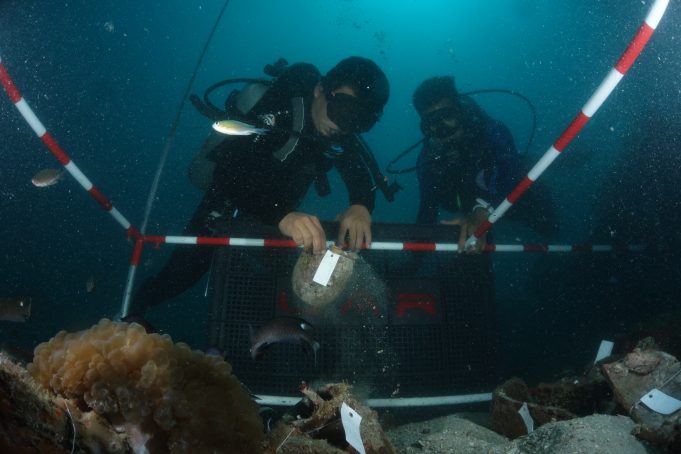By Dr. Azizi Abu Bakar
MALAYSIA’s rich biodiversity is under severe threat, highlighted by recent incidents of illegal poaching. Despite Malaysia’s commitment as a signatory to the Convention on Biological Diversity (CBD), these challenges persist. The upcoming COP 16 in Cali, Colombia, from October 21 to November 1, 2024, will be crucial for reviewing progress and setting future goals. The Kunming-Montreal Global Biodiversity Framework (GBF), adopted at COP 15, sets ambitious targets for 2030 and 2050 to achieve harmony with nature.
Malaysia is recognized as one of the world’s megadiverse countries, ranked 12th globally in the National Biodiversity Index. Our nation boasts a vast array of species, with approximately 60% of Malaysia’s land area remaining forested. Marine protected areas, covering coral reefs, seagrasses, and mangrove forests, are equally significant. Despite these efforts, threats such as land development, pollution, poaching, climate change, and invasive species persist, with Malaysia home to 1,141 threatened species according to the 2008 IUCN Red List.
The GBF’s long-term goals aim to increase natural ecosystems, halt extinction, sustainably use biodiversity, ensure equitable sharing of benefits, and secure implementation resources. Achieving these goals requires concerted efforts from all sectors of society, particularly the youth.
Youth Role as #GenerationRestoration for #MyBioD
In Malaysia, youth play a critical role in biodiversity conservation. The National Policy on
Biological Diversity 2016-2025 aims to involve at least 500,000 youths in nature-based
activities annually by 2025. Initiatives like strengthening biodiversity literacy in education,
supporting environmental training for teachers, and expanding the Rakan Alam Sekitar
programme are crucial for nurturing future leaders in conservation.
Urban biodiversity conservation is also essential, involving actions to protect green spaces, establish urban habitats for wildlife, and support private landowners in enhancing
biodiversity. Youth, representing the creative and innovative segment of our population, can amplify conservation efforts by fostering peer awareness and sharing best practices within their generation. Their voices in international negotiations are crucial for ensuring
intergenerational equity and effective, coordinated actions.
Research shows that awareness and knowledge of nature conservation influence behavior,
though social, economic, and societal issues also play a role. Interdisciplinary approaches in conservation education are critical. The Global Youth Biodiversity Network (GYBN) calls for ‘transformative education,’ fostering an active citizenry aware of their role in society and capable of stewarding towards a sustainable future.
Education must be tailored to local needs, integrating new technology and multi-device-
based delivery. Blended learning using virtual and augmented reality options is crucial for
future education in biodiversity conservation. Assessments should incorporate behavioral
and attitude changes, linking ecology with social, economic, and ecological systems central to sustainable development.
The Power of Social Media and AI in Biodiversity Conservation Awareness
Social media empowers youth to participate in biodiversity conservation efforts. Viral
campaigns can quickly raise awareness and organize policy changes and corporate
responsibility efforts. Social media allows youth to join conservation communities, share
ideas, and support each other’s efforts. Conservation influencers inspire and motivate youth to get involved in biodiversity conservation.
AI’s role in conservation is growing, with applications in habitat monitoring, wildlife
protection, data analysis, and pattern recognition. AI-equipped drones and remote sensing technology enhance cost-effective conservation efforts. The synergy between AI and conservation improves our ability to monitor and safeguard ecosystems, mitigate human-wildlife conflicts, and foster sustainable coexistence between people and wildlife.
AI also empowers youth in citizen science projects, contributing data on local biodiversity through observations and photographs. Youth engagement is vital for achieving biodiversity goals. The Youth Societies and Youth Development Act 2007 highlights the importance of preparing young people for leadership roles in biodiversity conservation. By empowering youth and fostering their participation in conservation efforts, we can ensure the sustainability of our natural heritage for future generations.
The National Policy on Biological Diversity 2016-2025 outlines actions for creating
awareness, nurturing youth participation, and supporting urban biodiversity. Implementing these actions requires collaboration among government agencies, educational institutions, civil society, and the private sector. Social media influencers and public campaigns play a significant role in raising awareness and inspiring action.
As we approach 2025, intensifying efforts to achieve the policy’s targets is crucial.
By working together, we can build a sustainable future where Malaysia’s rich biodiversity is valued, conserved, and sustainably used for the benefit of all. We call upon Malaysian youth to form a dedicated group for biodiversity conservation action. By uniting and advocating for our natural heritage, Malaysian youth can shape a sustainable and biodiverse future for our nation and the world. The future of our biodiversity depends on the actions we take today.

The writer from Universiti Malaya Sustainable Development Centre (UMSDC)

















